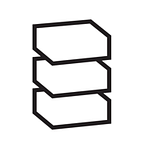From prototype to final product (Part I)
Nowadays this is the path which change majority of young entrepreneurs. Especially when we are thinking about hardware start-ups. Time goes by and the “graveyard” of spectacular ideas grows. So what is this path from prototype to final product really about and how to avoid a lot of problems? You’ll find all of the answers in this mini-series, which we prepared for you! (It is ideal moment to follow us ;) )
Start — Idea
Nothing changed, you have to have it.
As an example let’s use the lightning cube, powered by RGB LED, which can be controlled via smartphone.
Proof of concept of the product
At this part of our journey, we want to check if our idea is something valuable. Instead of thiniking about final look of our product, we want to test its basic functionalities to get some practical expierience. Probably you would’t have a lot of money at this point. So we build a simple prototype. Our aim is to make it work, not to make it look as we want it to at the final stage.
But how to build it?
There are two different ways of working. The methods of:
“Yesterday” like:
- Deadbug circuit,
- Build your board from scratch,
- Protoboards.
And the another option — building our prototype as we should do it “today”:
- Solderless protoboard, prepared to fit your needs,
- ready-made modules.
Logic:
- included in variety of modules,
- A lot of design — less coding,
- custom chips(almost single-chip solutions),
- A majority of logic is contained in the code.
Example — speech synthesizer:
Raspberry Pi~85x56mm = 4760mm²
In 1993 one of magzines about hardware in Poland showed a prototype of speech synthesizer, which system had ~120x100 mm = 2.5RPi
Then in 1994, they showed another one. This time, their solution’s dimensions was ~58x65mm = 0.8RPi. After just one year, the prototype was more than three times smaller!
And this is just the begging of Raspberry Pi’s possibilities. Maybe in comparision to the systems listed above, RPi isn’t the best choice, but everybody knows, what Raspberry Pi is!
Programming
You can choose:
- Quite expensive programotors (But Atmel invented cheap systems, which led us to platfroms like Arduino).
- IDEs made to help you configure your system.
- Free compilers (often limited in code size and the narrow line system).
Choosing and buying additional parts
This part of the process is usually cheap. This can cause incorrect determination of costs. Somebody, who builds mentioned system, needs BT module (3$), LED (>1$) and some discrete components (>1$). So it occurs that after summing up, you need just 5$ to build your product. But is this the whole price?
Power supply of the unit
Despite of the fact that this is extensive nad important topic, it is the part often overlooked. Here you should ask yourself a few questions:
- Would my battery be capable enough to handle my system?
- Is this solution safe?
- Is this solution comfortable for final user?
Casing
This topic is often discussed in parallel with the process of building a prototype. Today it is easy to design and print complicated housing for your device. On the other hand, you should remember that what is possible to do with 3D-printer is sometimes impossible to do on the production line.
Producing a trail series
This is more complicated process. It doesn’t take few days like making of prototype did. What is more, the use of plastics is often not possible, since it requires an injection moulding. Instead of plastic, you can choose metal.
But if you really want to have a plastic casing, think about 3D-printing. It’s not cheap, prepare about 300$ if you want to use together and compare different materials.
Connect!
Finally, your prototype is working and has its housing. You are now able to show functionalities of it and show how it looks. So connect it!
Read the second and third part of our series!
That’s all for now!
If you like what you read and want more — give this post a ❤ and follow us, so you will get next posts in your Medium’s newsfeed.
You can also:
Join our Hardware group and support polish community!
Like us on Facebook
Discover our website and latest products
Follow us on Twitter
